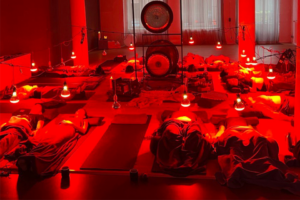Red Light Therapy and Cancer: Illuminating the Facts and Dispelling Myths

Red light therapy has gained popularity in recent years for its potential health benefits. However, when it comes to serious conditions like cancer, it’s crucial to separate fact from fiction. This article will explore the relationship between red light therapy and cancer, addressing common concerns and providing evidence-based information to help you make informed decisions about your health.
Table of Contents
What is Red Light Therapy and How Does it Work?
Red light therapy, also known as photobiomodulation or low-level light therapy (LLLT), uses specific wavelengths of red and near-infrared light to stimulate cellular processes in the body. This non-invasive treatment exposes the body to red or near-infrared light, typically in the range of 630-850 nanometers.The science behind red light therapy suggests that these light wavelengths can penetrate the skin and be absorbed by cells, potentially promoting various biological effects, including:
- Increased cellular energy production
- Improved blood circulation
- Reduced inflammation
- Enhanced tissue repair and regeneration
While these effects can be beneficial for various health conditions, it’s important to understand how they might relate to cancer.
Can Red Light Therapy Cause Cancer?
One of the most common concerns about red light therapy is whether it can cause cancer. To address this, let’s look at the available scientific evidence:
- No direct link to cancer development: There is currently no scientific evidence suggesting that red light therapy directly causes cancer. The wavelengths used in red light therapy are non-ionizing, meaning they don’t have enough energy to damage DNA or cause mutations that could lead to cancer development.
- Safety studies: Multiple studies have investigated the safety of red light therapy, and it is generally considered safe when used as directed. A comprehensive review published in the journal “Photomedicine and Laser Surgery” found no significant adverse effects associated with red light therapy.
- FDA clearance: Many red light therapy devices have received FDA clearance for various uses, indicating that they meet certain safety standards.
However, it’s important to note that while red light therapy doesn’t appear to cause cancer, more research is needed to fully understand its long-term effects on various health conditions, including cancer.
Can Red Light Therapy Help with Cancer Treatment?
While red light therapy is not a cure for cancer, some research suggests it may have potential benefits in certain aspects of cancer care:
- Reducing side effects of cancer treatments: Some studies have shown that red light therapy may help alleviate side effects of cancer treatments such as chemotherapy and radiation, including oral mucositis (mouth sores) and dermatitis (skin inflammation).
- Supportive care: Red light therapy might help improve quality of life for cancer patients by reducing pain, inflammation, and fatigue associated with cancer and its treatments.
- Potential synergistic effects: Some research is exploring whether red light therapy could enhance the effectiveness of certain cancer treatments when used in combination.
It’s crucial to emphasize that red light therapy should never be used as a replacement for conventional cancer treatments. Always consult with your oncologist before incorporating any complementary therapies into your cancer care plan.
Are There Any Risks of Using Red Light Therapy for Cancer Patients?
While red light therapy is generally considered safe, cancer patients should be aware of potential risks and considerations:
- Interaction with photosensitizing medications: Some cancer treatments can make the skin more sensitive to light. If you’re taking photosensitizing medications, consult your doctor before using red light therapy.
- Potential stimulation of existing tumors: Some studies have suggested that certain types of light therapy could potentially stimulate the growth of existing tumors. However, more research is needed to understand this relationship fully.
- Lack of regulation: Not all red light therapy devices are created equal. Some may not deliver the promised wavelengths or intensities, potentially leading to ineffective treatment or even harm.
- Distraction from proven treatments: There’s a risk that patients might delay or forego conventional cancer treatments in favor of alternative therapies like red light therapy, which could be dangerous.
What Does Current Research Say About Red Light Therapy and Cancer?
The relationship between red light therapy and cancer is complex and still being studied. Here’s a summary of some current research findings:
- Potential benefits: Some studies have shown that red light therapy may help reduce inflammation, promote wound healing, and alleviate pain in cancer patients.
- Mixed results on tumor growth: Research on the effects of red light therapy on tumor growth has produced mixed results. Some studies suggest it might inhibit tumor growth, while others indicate it could potentially stimulate it in certain conditions.
- Need for more research: Most experts agree that more large-scale, long-term studies are needed to fully understand the effects of red light therapy on different types of cancer.

How Does Red Light Therapy Compare to Other Light-Based Cancer Treatments?
It’s important to distinguish red light therapy from other light-based treatments used in cancer care:
- Photodynamic therapy (PDT): This is a type of cancer treatment that uses light-sensitive drugs and a specific type of light to kill cancer cells. Unlike red light therapy, PDT is an established cancer treatment for certain types of cancer.
- Laser therapy: This treatment uses high-intensity light to shrink or destroy tumors. It’s different from red light therapy, which uses low-level light and is not intended to directly treat tumors.
- Ultraviolet (UV) light therapy: Used in some skin conditions, UV light therapy is different from red light therapy and can increase the risk of skin cancer if overused.
Is Red Light Therapy Safe for Cancer Survivors?
For cancer survivors, the safety of red light therapy depends on various factors:
- Type of cancer: Different types of cancer may respond differently to light therapy.
- Time since treatment: The appropriateness of red light therapy may depend on how long it’s been since your cancer treatment ended.
- Current health status: Your overall health and any ongoing treatments should be considered.
- Consultation with healthcare providers: Always consult with your oncologist or healthcare team before starting any new therapy, including red light therapy.
What Precautions Should Be Taken When Using Red Light Therapy?
If you’re considering using red light therapy, keep these precautions in mind:
- Consult your doctor: This is especially important if you have or have had cancer, or if you’re undergoing cancer treatment.
- Use FDA-cleared devices: Look for devices that have been cleared by the FDA for safety.
- Follow instructions carefully: Adhere to the recommended treatment times and frequencies.
- Protect your eyes: Always use proper eye protection when using red light therapy devices.
- Monitor your skin: If you notice any unusual changes in your skin, stop treatment and consult a healthcare professional.
How Can I Safely Incorporate Red Light Therapy into My Wellness Routine?
If you’re interested in trying red light therapy, here are some tips for safe incorporation:
- Start slowly: Begin with short sessions and gradually increase duration as tolerated.
- Be consistent: Regular use is often more beneficial than sporadic treatments.
- Combine with healthy habits: Use red light therapy as part of a comprehensive wellness routine that includes a healthy diet, regular exercise, and stress management.
- Keep expectations realistic: Remember that while red light therapy may offer some benefits, it’s not a cure-all or a replacement for medical treatment.
- Stay informed: Keep up with the latest research on red light therapy and its potential effects on health and cancer.
Conclusion: Shedding Light on Red Light Therapy and Cancer
Red light therapy is a promising field with potential benefits for various health conditions. While it doesn’t appear to directly cause cancer, its relationship with cancer is complex and still being studied. For cancer patients and survivors, it’s crucial to approach red light therapy with caution and under the guidance of healthcare professionals.Key takeaways:
- Red light therapy doesn’t directly cause cancer
- It may help alleviate some side effects of cancer treatments
- More research is needed on its effects on tumor growth
- Always consult with your oncologist before using red light therapy
- Use FDA-cleared devices and follow safety guidelines
- Red light therapy is not a replacement for conventional cancer treatments
Remember, your health is paramount. Always prioritize evidence-based treatments and consult with qualified healthcare providers when making decisions about your cancer care or general wellness routine.
A typical red light therapy device used for various health applicationsFor more information on red light therapy devices and their applications, check out our full body red light therapy options. If you’re interested in portable solutions, explore our portable red light therapy devices for home use. For those looking to target specific areas, our red light therapy wand might be a suitable option. Always remember to consult with a healthcare professional before starting any new therapy regimen.






